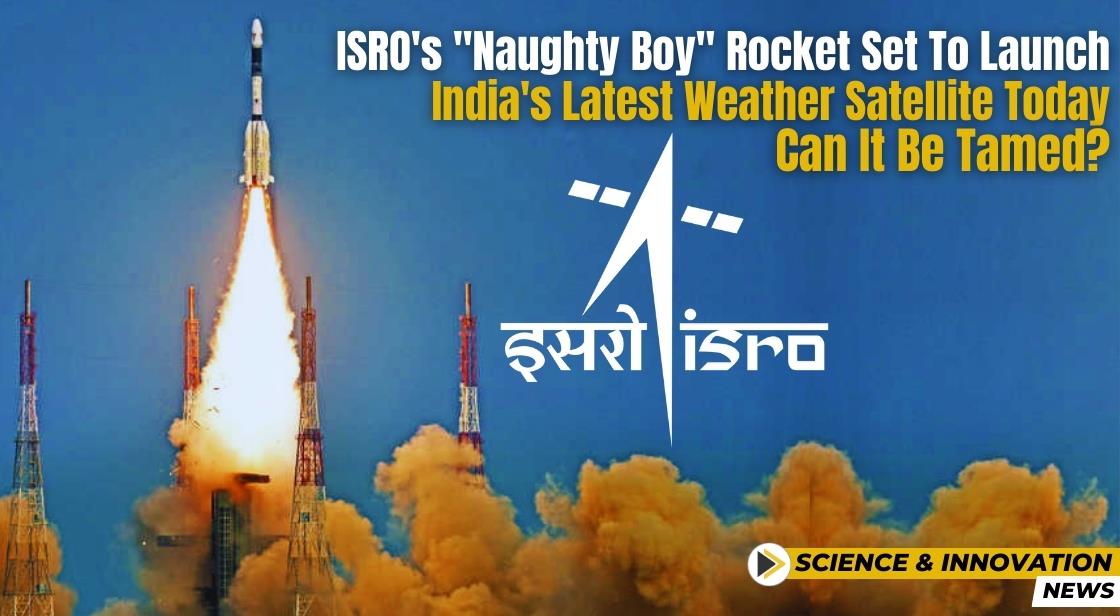ISRO's "Naughty Boy" Rocket Set to Launch India's Latest Weather Satellite Today: Can It Be Tamed?

News Synopsis
ISRO is gearing up for the launch of INSAT-3DS, India's cutting-edge meteorological satellite, using the Geosynchronous Satellite Launch Vehicle (GSLV). Despite being dubbed the 'naughty boy' due to its performance history, the GSLV is set for its 16th mission, showcasing the nation's commitment to advancing space exploration.
ISRO INSAT-3DS Mission Overview:
-
Launch Date: February 17, 2024, 5:35 PM IST
-
Rocket: Geosynchronous Satellite Launch Vehicle (GSLV-F14), nicknamed "naughty boy" for its past performance
-
Satellite: INSAT-3DS, a third-generation weather satellite
-
Mission Objective: Enhance India's weather and climate monitoring capabilities
GSLV Performance History:
The GSLV, with a history of 15 flights, earned its nickname due to a 40% failure rate in six missions. The rocket's last launch in May 2023 was successful, marking its 10th flight with the indigenous cryogenic engine. As it embarks on its 16th mission, the GSLV aims to overcome its mischievous reputation.
Mission Objectives and INSAT-3DS:
The primary objective of the GSLV F14 mission is to deploy INSAT-3DS into a geosynchronous transfer orbit. INSAT-3DS, designed for meteorological observations, will monitor the Earth's surface, conduct oceanic observations, and analyze environmental factors crucial for weather forecasting. The satellite weighs 2,274 kg and comes at a cost of approximately ₹480 crore, fully funded by the Ministry of Earth Sciences.
Countdown Progress:
The 27-hour countdown for the GSLV F14 mission has been progressing smoothly, according to ISRO officials. The mission, utilizing advanced technology and payloads, will contribute significantly to India's weather and climate monitoring services.
Significance of INSAT-3DS:
INSAT-3DS is a pivotal component of India's meteorological satellite program. It features optical radiometer, sounder payload, data relay transponder, and search and rescue transponder. The satellite's capabilities are crucial for enhancing disaster warning systems and weather-related services.
Key Features of INSAT-3DS:
-
Advanced sensors: Optical radiometer, sounder payload, data relay transponder, and search and rescue transponder for comprehensive data collection.
-
Geo-stationary orbit: Offering continuous monitoring of the Earth's surface and oceans.
-
Improved accuracy: Providing crucial data for weather forecasting, cyclone prediction, and environmental monitoring.
Anticipation and Satellite Technology:
The launch of INSAT-3DS is eagerly anticipated, considering the role of weather satellites as game-changers. Satellites serve as the 'eyes in the sky,' enabling precise cyclone forecasts. Dr. M Ravichandran, Secretary of the Ministry of Earth Sciences, emphasizes the transformative impact of Indian weather satellites on forecasting accuracy.
Conclusion:
As India eagerly awaits the launch of INSAT-3DS aboard the GSLV 'naughty boy,' the mission holds the promise of advancing the nation's capabilities in weather forecasting, disaster management, and climate monitoring. This strategic step aligns with India's commitment to space exploration and harnessing satellite technology for the benefit of society.
You May Like









